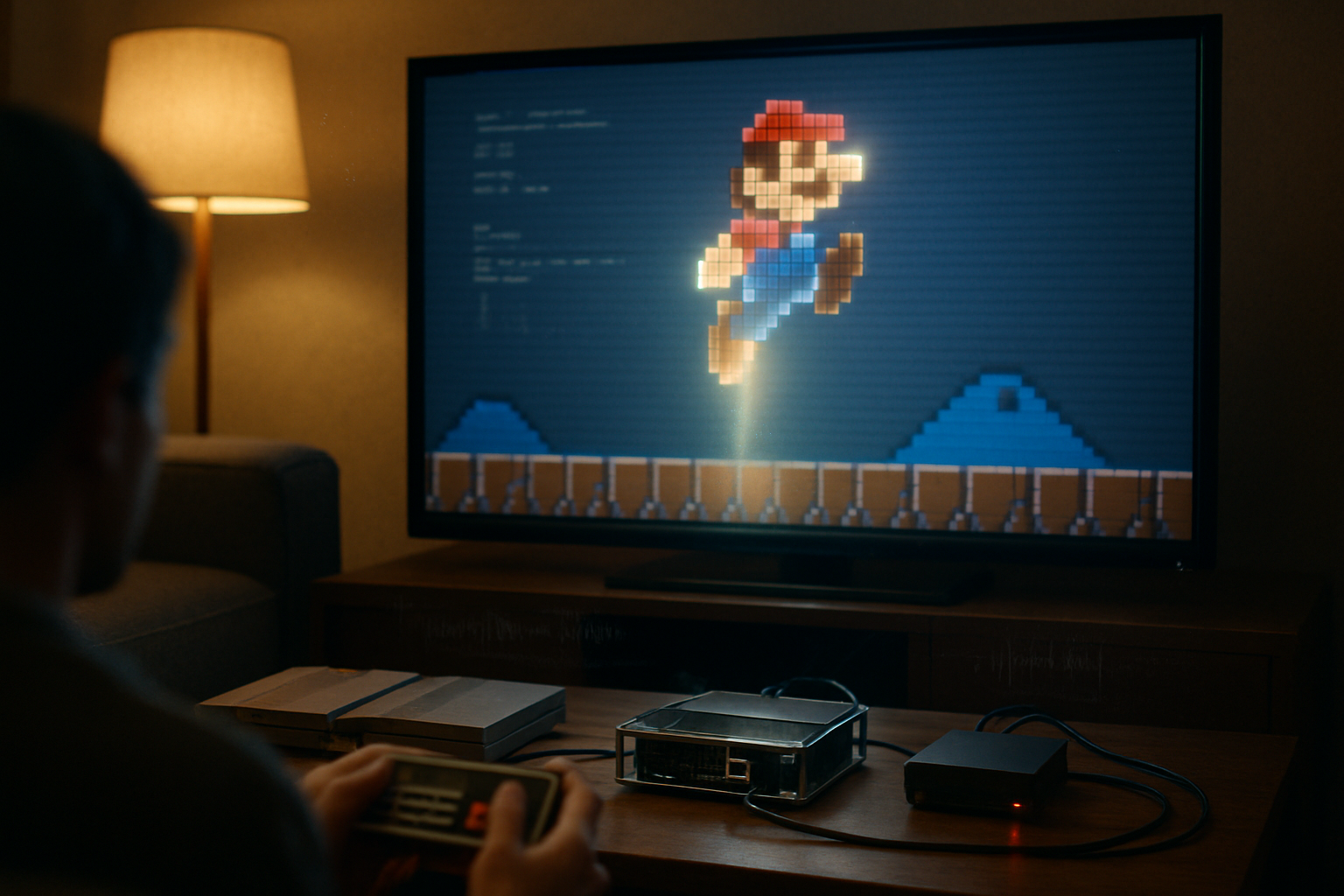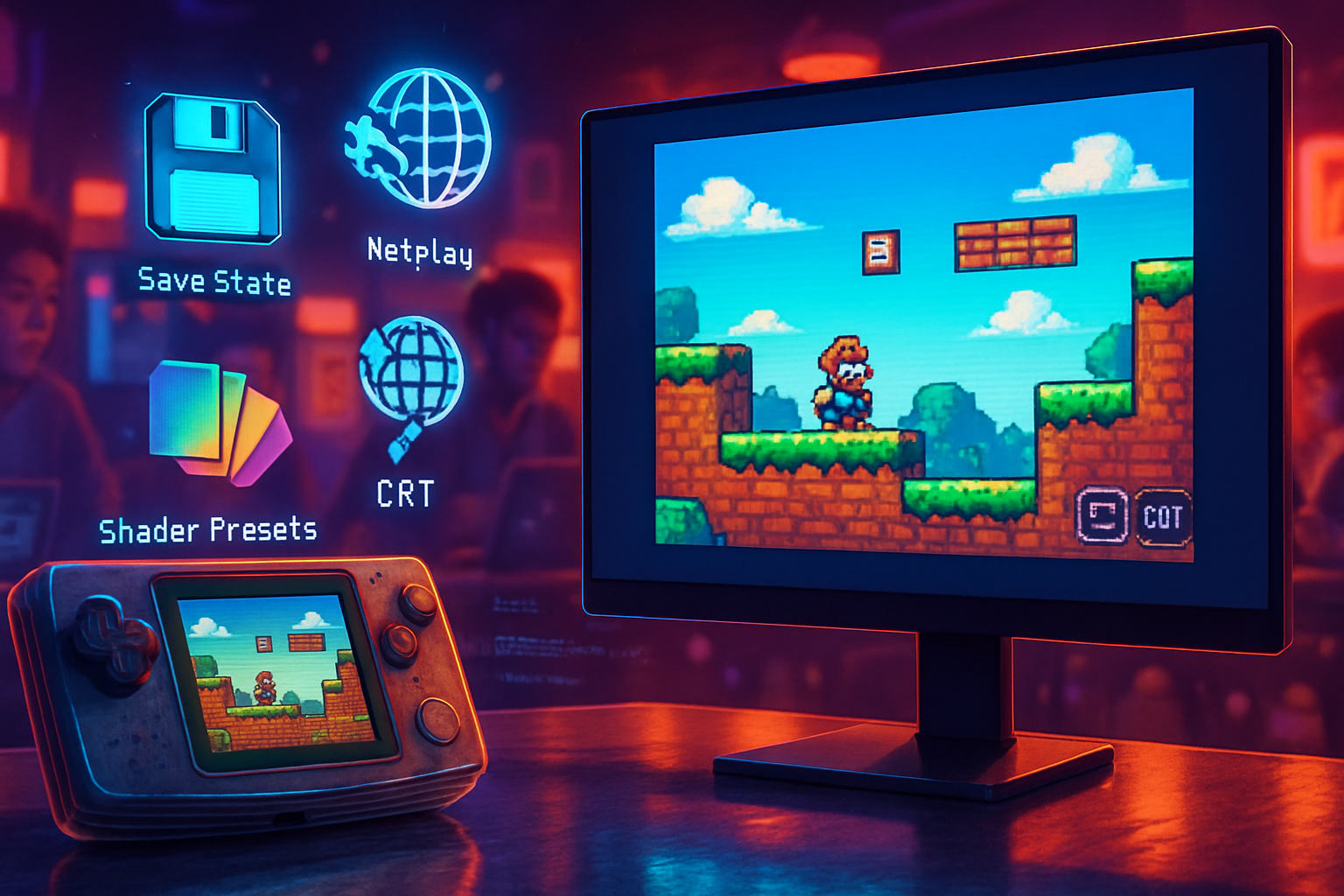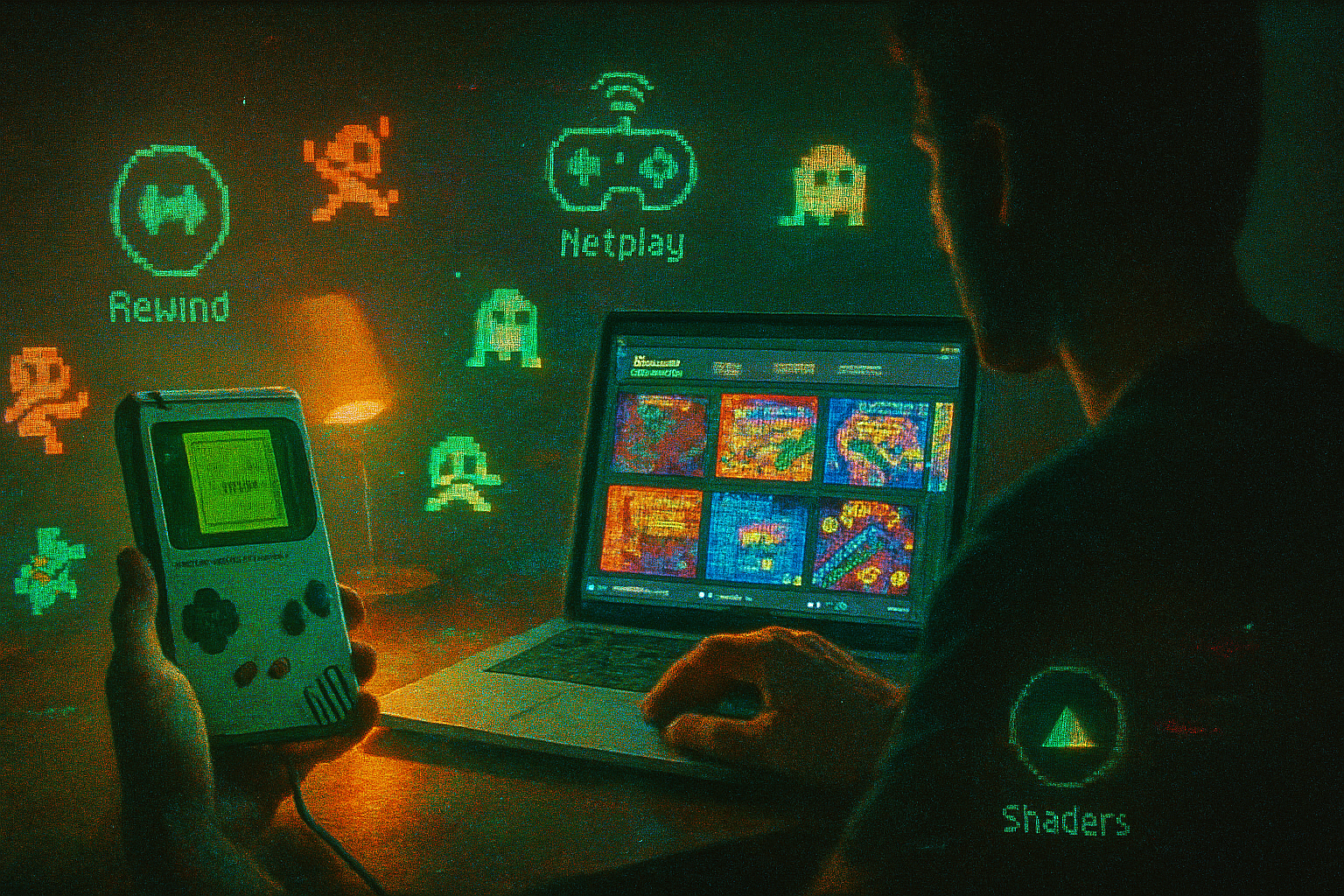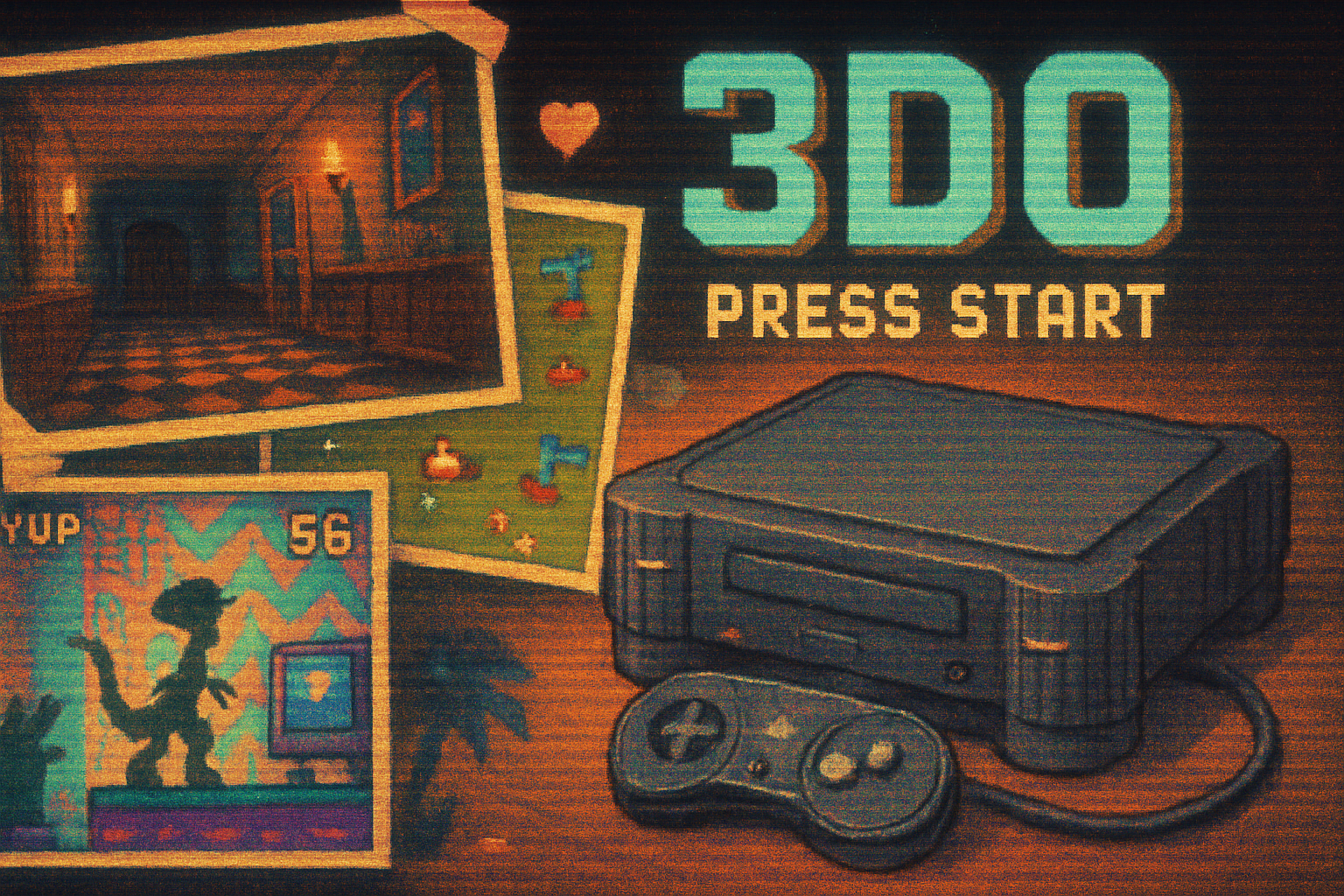· retrogaming · 6 min read
Rediscovering the Jag: Why the Atari Jaguar Deserves a Second Look
The Atari Jaguar failed in the market but not in imagination. This essay explains why its odd hardware and daring library produced games that still surprise-how preservation, emulation and modern tech can restore and reframe the Jag for today’s players.

It starts with a box in the attic.
You know the one: brown cardboard, tape gone brittle, the faint perfume of old plastic and optimism. Inside is a dark, squat cartridge console with a jagged logo and a history that reads like a trench map of failure: brilliant ambitions, bad timing, worse PR. Yet tucked among the catalogue of cringe and curiosity are games that feel less like historical curiosities and more like experiments the industry forgot to finish.
This is the case for the Atari Jaguar: a console that died loudly in the 1990s and yet, when dusted off, still offers moments of design clarity and raw, often illicit joy.
The myth and the machine
Atari launched the Jaguar in 1993 with a familiar cocktail of hype: bold claims about being the first “64-bit” console, slick screenshots, and a marketing team that believed spin could outpace engineering. The reality was messier. The Jaguar’s architecture revolved around two custom chips with the pop-culture names “Tom” and “Jerry,” supported by a Motorola 68000. That odd three-headed CPU arrangement produced software that was hard to develop for and harder to optimize.
But hardware peculiarities can breed unexpected software. The Jag’s quirks led to games that took risks-visually and conceptually-that the era’s safer, big-selling franchises often would not.
References and reading on the hardware and history:
- Atari Jaguar - Wikipedia
Why the Jag still matters
Three short reasons, then examples.
- Experimental design. Many Jag titles didn’t aim for mass-market polish. They tried new control schemes, psychedelic visuals, or raw arcade intensity.
- Uncompromising ports and exclusives. Some ports that landed on the Jag pushed technical limits; a handful of exclusives became cult masterpieces.
- Aesthetic resonance. The Jag has a particular vibe-grainy polygons, odd color palettes, and a willingness to be weird-that appeals to modern indie tastes.
Standouts (and why they matter):
- Tempest 2000 - Jeff Minter’s synesthetic shooter is a case study in a designer pushing hardware and players toward a trance-state, and it influenced successors decades later. See Tempest 2000 and its lineage to Tempest 4000: Tempest 2000 (Wikipedia) and Tempest 4000 (Wikipedia).
- Alien vs. Predator (1994) - a tight, tense FPS that used the Jag’s capabilities to create atmosphere and a sense of spatial dread. This port is frequently cited as one of the system’s best: Alien vs. Predator (1994 video game).
- Doom (Jaguar port) - not the canonical Doom experience, but technically impressive for the hardware and still fun to play.
- Iron Soldier - a slower, more meditative mech sim with surprising depth and responsiveness.
These titles are not “better” than contemporary hits on PlayStation or Saturn, but they are distinct. That difference is exactly the point.
What modern gamers can learn from Jag games
Think of the Jag library as an indie compilation nested inside a corporate failure. Modern players who value unusual mechanics, designer personality, and games that refuse to smooth their rough edges will find much to admire.
- Indie sensibilities - Developers took risks. Levels get weird. Boss fights are uncompromising.
- Mechanical purity - A short, difficult arcade-level, or a single idea executed well - something modern design sometimes forgets in the chase for scope.
- Psychedelia and audio design - Soundtracks and auditory feedback in games like Tempest 2000 are experiments in using music as gameplay feedback.
If you like small-batch creativity-roguelikes, boutique platformers, or auteur-driven shooters-the Jag speaks your language.
Preservation: why it matters and how it’s happening
The Jaguars were produced in modest numbers and used media (cartridges, sometimes CD add-ons) that can deteriorate. Without active preservation, cartridges die, manuals go missing, and the cultural context is lost.
Preservation efforts fall into three broad categories:
Emulation. Software emulators let modern machines run Jaguar code. The most widely known Jaguar emulator is Virtual Jaguar, which aims to reproduce the system’s behavior on PCs. Emulation makes the games accessible and enables archival work: Virtual Jaguar (Wikipedia).
FPGA and hardware re-creation. Field Programmable Gate Arrays recreate hardware behavior at the logic level rather than by interpreting ROMs in software. The broader retro community and projects like MiSTer work to bring authentic timing and behavior back to modern devices: MiSTer FPGA project. FPGA implementations can fix timing-sensitive titles and preserve the quirks that make the Jag feel like the Jag.
Physical preservation and reproduction. Enthusiasts archive cartridges, produce reproduction PCBs, and maintain databases of manuals, scans and metadata. Community hubs such as AtariAge are central to this work: AtariAge.
All three approaches are complementary: emulators broaden access, FPGA seeks authenticity, and community archival preserves context.
How modern technology can breathe new life into the Jag
Here are concrete, realistic ways we can revive these games without pretending to be the 1990s again.
Better emulation and accuracy. Improving timing, GPU/CPU synchronization and sound emulation makes classic titles play as they were meant to. This is incremental, painstaking work, but it pays off - levels behave correctly, enemy AI doesn’t glitch, music plays at the right tempo.
FPGA cores for authentic play. An FPGA recreation can mirror the Jag’s hardware behavior so faithfully that glitchy-but-loved timing becomes part of the experience again. That authenticity matters to preservationists and purists.
Community remasters and patches. Fans can release patches that fix bugs, translate text, rebalance difficulty, or restore content cut from the original releases. These are not official remakes; they’re restorations and reinterpretations.
Cartridge repros and flashcarts. Reproduced cartridges and flash device solutions let players run ROMs on genuine hardware-vital for those chasing authentic controllers, displays and input lag.
Academic and aesthetic reappraisal. Curators, streamers and writers can put the Jag’s titles in context, showing how design ideas anticipated modern indie games and why certain experiments still feel fresh.
A practical guide: how to play Jag games today (legal and sane)
- Original hardware - If you can find a working console and cartridges, great. It’s the most authentic route but requires patience: cables, power supplies and consoles age.
- Emulation - Use respected emulators such as Virtual Jaguar for convenience and archival exploration. Emulation lets you try games quickly and saves you from hunting rare cartridges.
- Modern reimaginings - Some Jag ideas live on in newer releases inspired by its designers (e.g., Jeff Minter’s later work). Look for those if you want the vibe without the hardware headaches.
Always respect copyright and community norms. Preservation forums and specialist outlets will tell you what’s legal in your jurisdiction and what falls into grey areas.
The Jag’s moral: why its rediscovery matters beyond nostalgia
Nostalgia is boring when it’s just longing for what we already had. The Jag’s value is not merely sentimental. It forces us to remember that game-making is a conversation between risk and refinement. Big budgets and polish win markets. Risky experiments win influence.
The modern industry has returned to experimentation-small teams, narrow scopes, personal aesthetics. The Jag was doing that, sometimes badly, sometimes brilliantly, long before the word “indie” was supposed to mean anything.
If you’re willing to look past corporate failure and technical awkwardness, you’ll find moments that still shock and delight. That’s why the Jag deserves a second look: not because it was brilliant overall, but because it made space for games that dare to be different.



